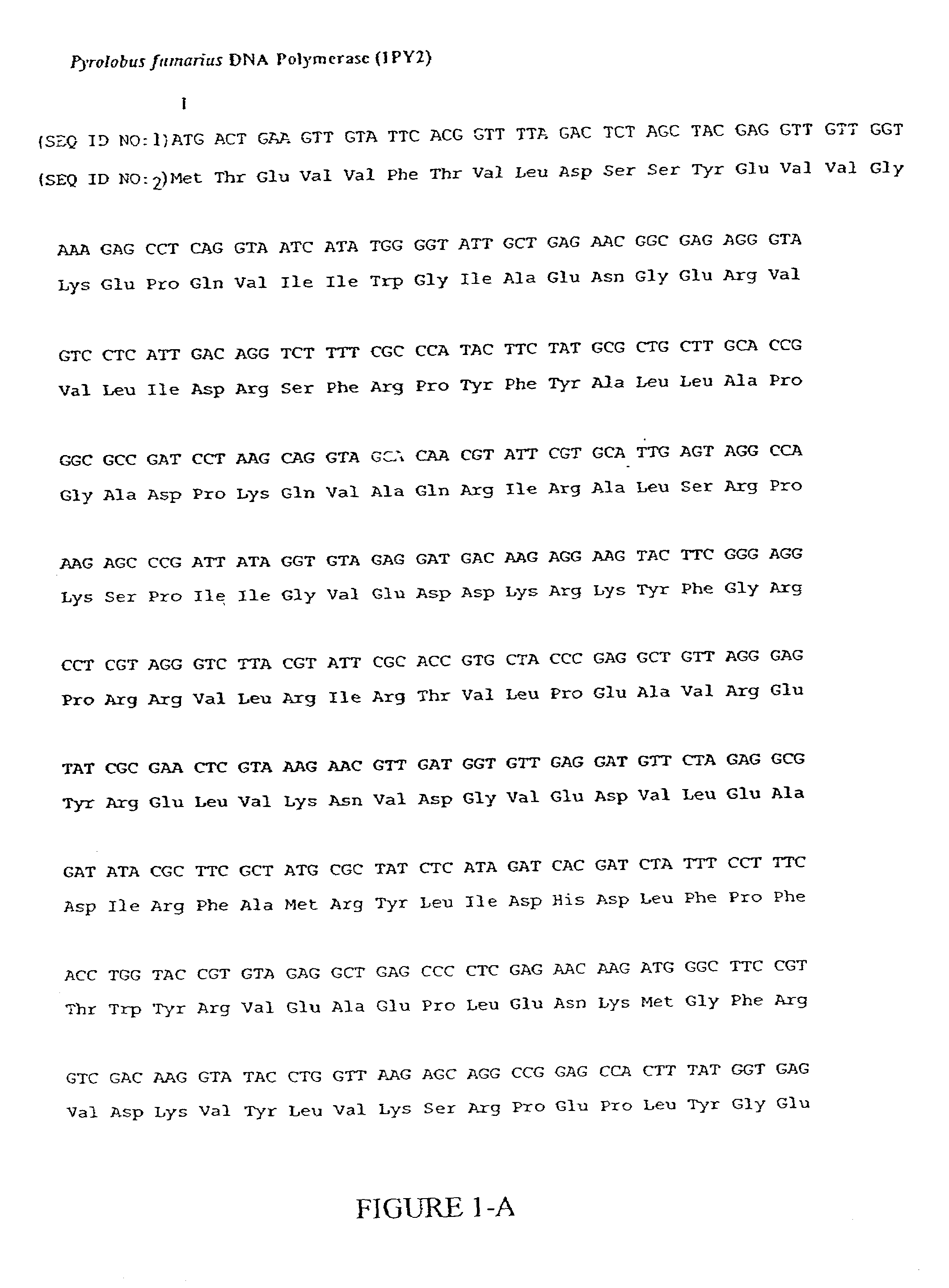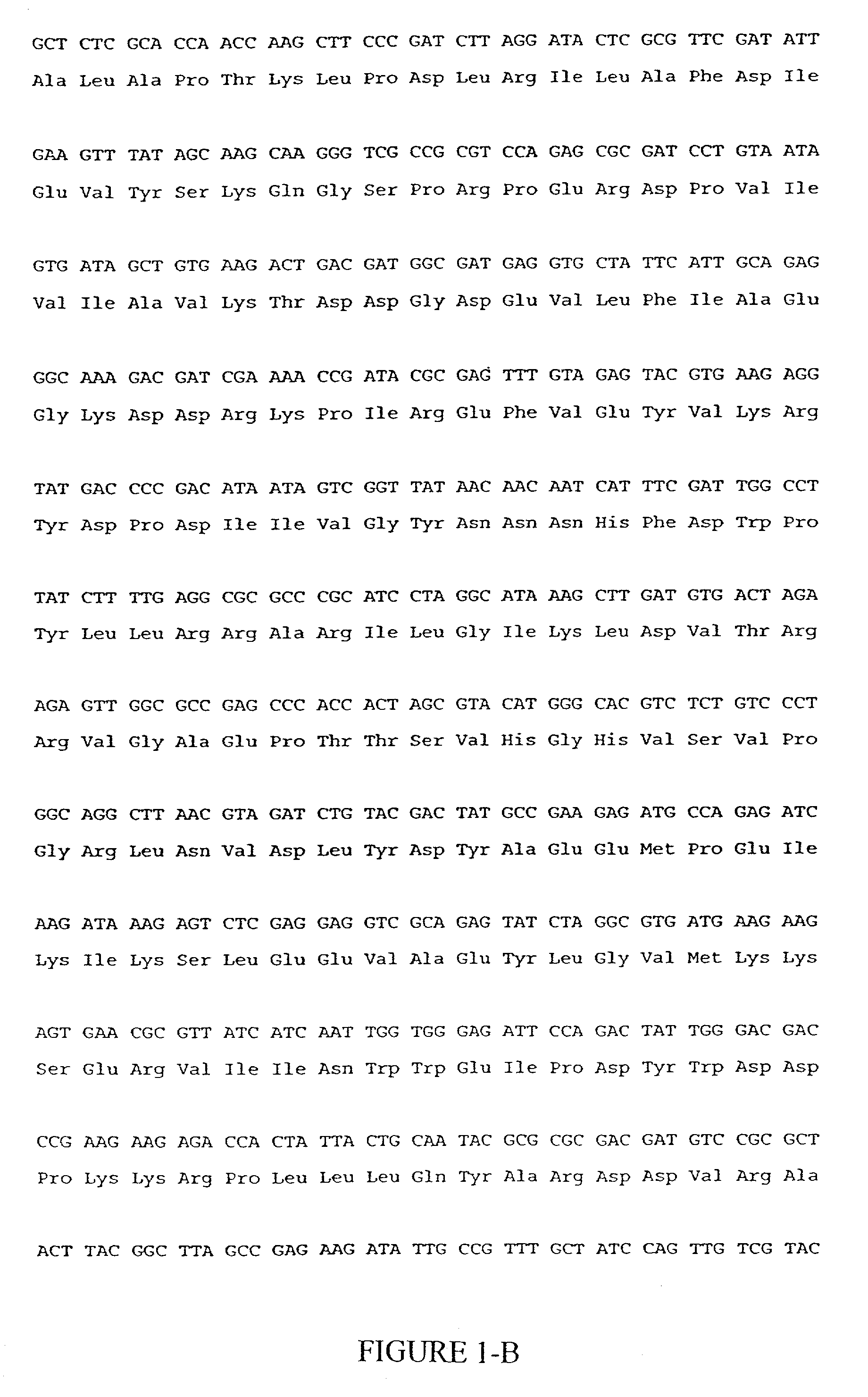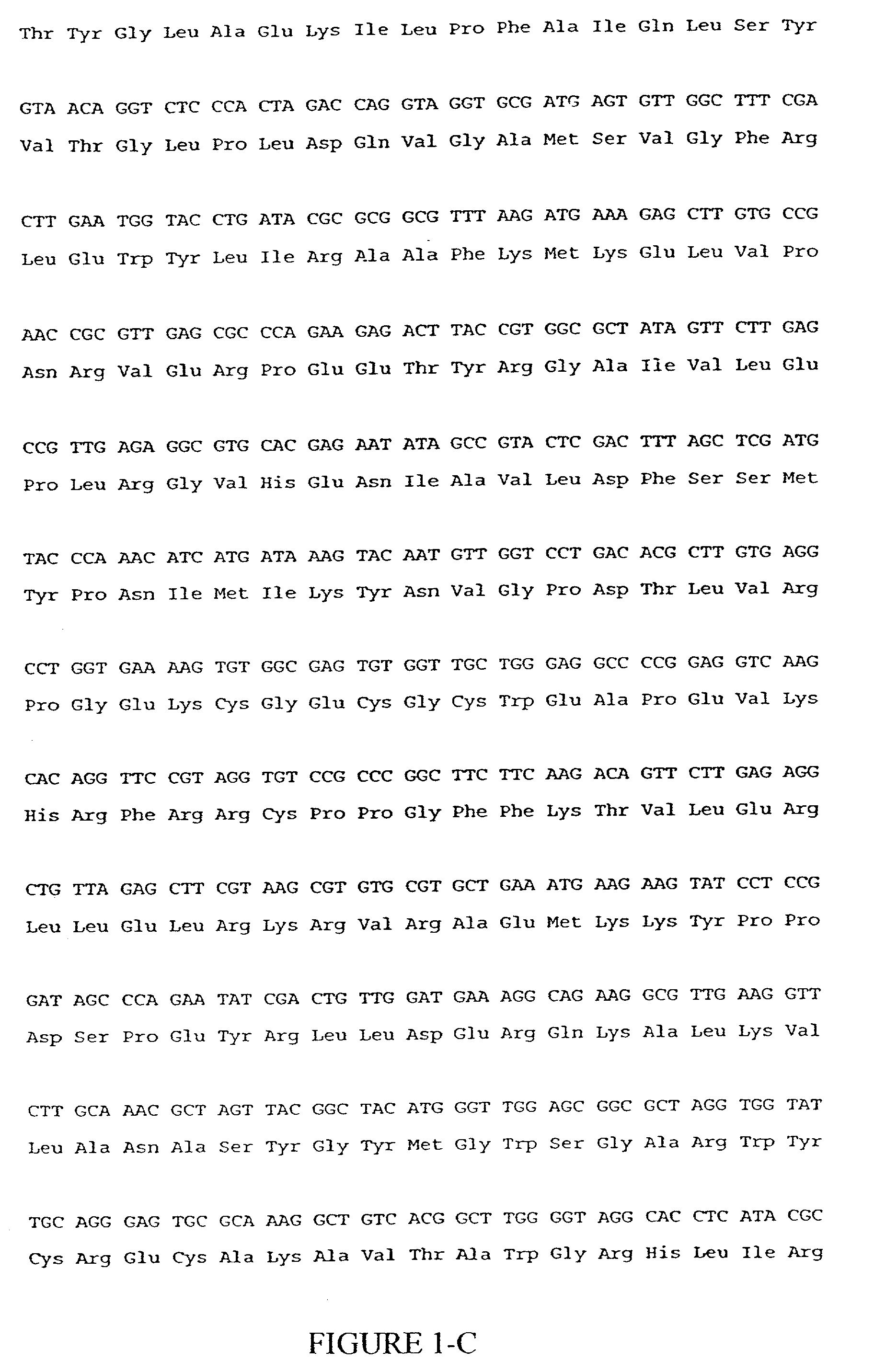Polypeptides having polymerase activity and methods of use thereof
a polymerase and activity technology, applied in the field of polynucleotides and polypeptides, can solve the problems of difficult culture of extreme hyperthermophilic microorganisms, extreme fragility of i>pyrodictium /i>species, and the difficulty of standard bacterial fermentation techniques for culturing pyrodictium, etc., and achieve the effect of high temperature polymeras
- Summary
- Abstract
- Description
- Claims
- Application Information
AI Technical Summary
Benefits of technology
Problems solved by technology
Method used
Image
Examples
example 1
Optimization Testing For SEQ ID NO:16 Polymerase
[0305]Optimization tests were conducted to determine the most favorable conditions for utilizing the DNA polymerase of SEQ ID NO: 14, 16 for polymerase activity in PCR at temperatures in the range from 85° C. to 95° C. The parameters tested were buffer, pH, salt and salt concentration, Mg ion source, detergent and detergent concentration.
[0306]The buffers tested were Tris-HCl, Tris-HOAc, phosphate buffer, Bicine, HEPES, MOPS, and TAPS. The most ideal buffer was Tris HCl.
[0307]The pH range tested was from 7.5 to 10.0. The most ideal pH was 10.0.
[0308]The salts tested were NaCl, NaOAc, KCl, (NH4)2SO4, NH4OAc, and LiCl at concentrations from 5 mM to 200 mM. The most favorable salt was 25 mM NaOAc. The magnesium ion sources tested were MgCl2, Mg(OAc)2, MgSO4 at concentrations from 0.5 mM to 5 mM. The most favorable of these was 2 to 2.5 mM Mg(KOAc)2.
[0309]The detergents tested were NP-40, Tween-20®, and Triton X-100® detergents at concentr...
example 2
High Fidelity of the DNA Polymerase of SEQ ID NO:16
[0311]The 3.3 kb lacZ gene was amplified and cloned. A β-galactosidase assay, as described by Barnes was performed. (Barnes, W. M. (1994) Proc. Natl. Acad. Sci., 91 / :2216–2220.)
[0312]The results of the comparison of the DNA polymerase of SEQ ID NO: 16 and Taq are shown in FIG. 6. It can be seen from the Figure that the relative frequency of mutation is greater in Taq, than in DNA polymerase of SEQ ID NO: 16. With DNA polymerase of SEQ ID NO: 16, the mutational frequency per base pair per template doubling was 6.0×10−5, while it was 1.8×10−4 with Taq.
example 3
Yield and Versatility of the DNA Polymerase of SEQ ID NO:16
[0313]Three cDNA templates, long templates and GC-rich templates were amplified using DNA polymerase of SEQ ID NO:16. The results are set forth in FIGS. 7, 8 and 9.
[0314]Three cDNA templates were prepared, a 3.0 kb thyroid hormone receptor coactivating gene, a 3.3 kb Oncostatin-M specific receptor beta gene and a 2.1 kb portion of protein tyrosine Phosphatase Receptor beta gene. All three templates were amplified using 10 nanograms of HeLa first strand cDNA for 30 cycles of PCR. PCR was performed twice on each template, first using DNA polymerase of SEQ ID NO: 16 as the polymerase and second using Taq. SDS-PAGE gels were run to compare the results with DNA polymerase of SEQ ID NO: 16 versus Taq. The resulting gels indicated that DNA polymerase of SEQ ID NO: 16 was able to amplify all three templates with a yield similar to that achieved with Taq.
[0315]Additionally, a lambda phage genomic DNA of varying length were amplified ...
PUM
| Property | Measurement | Unit |
|---|---|---|
| temperature | aaaaa | aaaaa |
| temperature | aaaaa | aaaaa |
| temperature | aaaaa | aaaaa |
Abstract
Description
Claims
Application Information
 Login to View More
Login to View More - R&D
- Intellectual Property
- Life Sciences
- Materials
- Tech Scout
- Unparalleled Data Quality
- Higher Quality Content
- 60% Fewer Hallucinations
Browse by: Latest US Patents, China's latest patents, Technical Efficacy Thesaurus, Application Domain, Technology Topic, Popular Technical Reports.
© 2025 PatSnap. All rights reserved.Legal|Privacy policy|Modern Slavery Act Transparency Statement|Sitemap|About US| Contact US: help@patsnap.com



